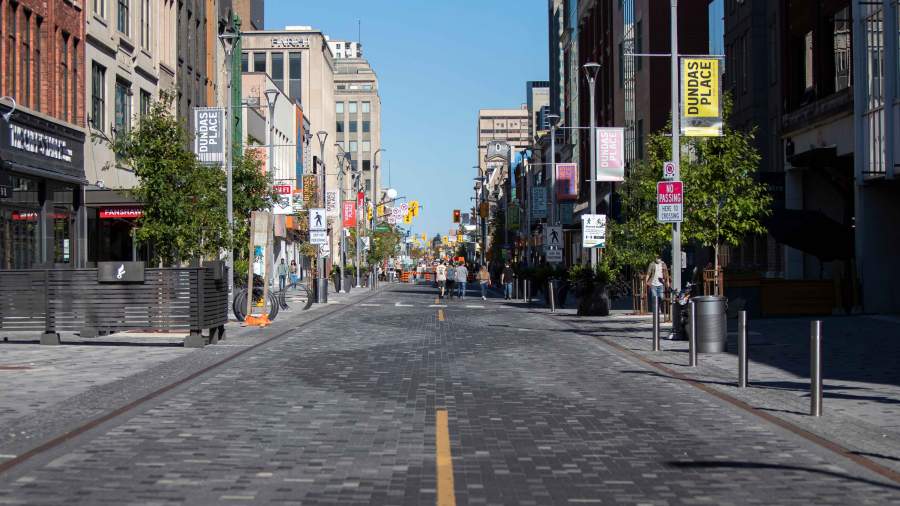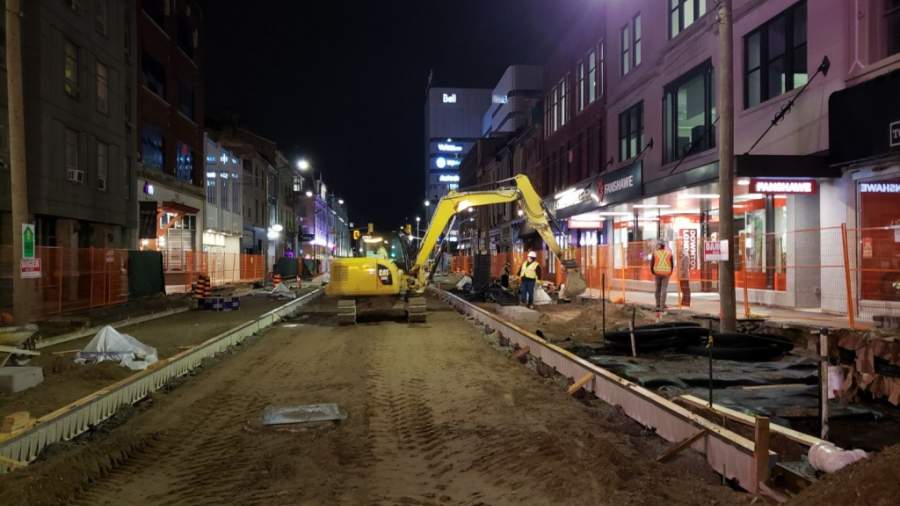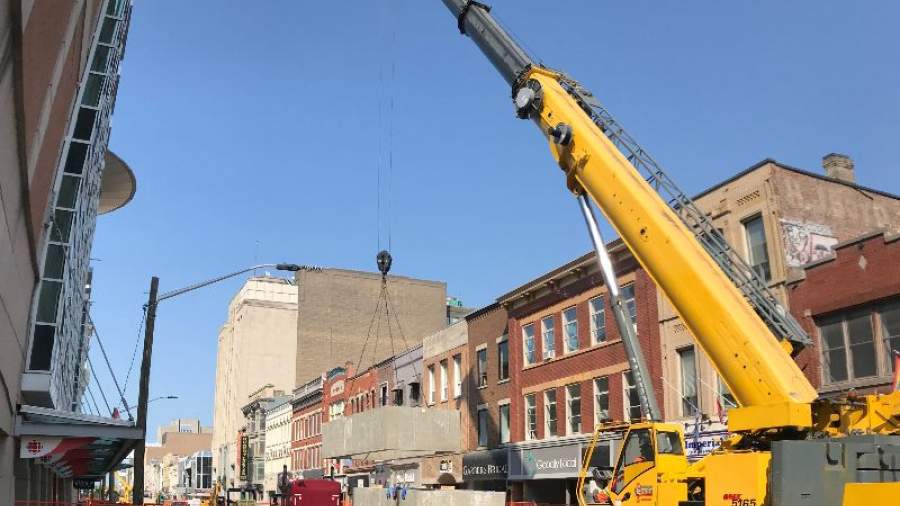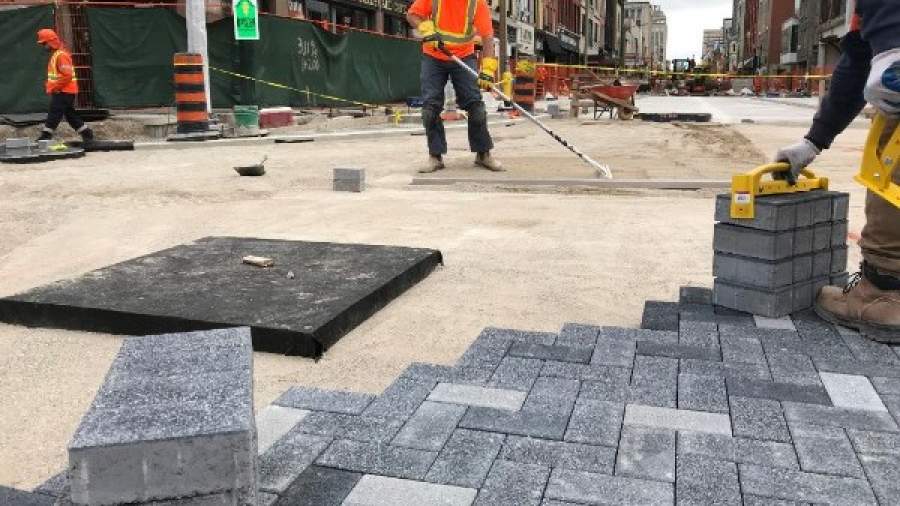Building Dundas Place
Transforming Dundas from a street to a place
Image
The official website for the City of London, Ontario
Dundas Place is a flexible street designed to close to vehicle traffic to accommodate different events and activations. It is designed to be a destination in our downtown, and a hub for local artists, experiences, and businesses. Inspired by London’s relationship with the Thames River, Dundas Place is built with a unique wave-like streetscape.
London's first flexible street is curbless and incorporates mid-block crossovers, allowing pedestrians to navigate from side to side with ease. Dundas Place can be closed to vehicles for special events and activations, to offer more space for pedestrians and cyclists. Dundas Place has been designed to remain open to vehicle traffic whenever the space is not being used for an event or activity requiring one or several blocks to be closed to traffic.
In addition to the above-ground transformation, Dundas Street underwent storm sewer, sanitary sewer and utility (internet, hydro, water) renewal work during construction in 2018/19. More than 700,000 new bricks were placed along four blocks during Dundas Place’s construction, along with new street furniture, bollards, and brighter street lights.

There were a lot of "firsts" for this project, such as the use of pedestrian navigation maps on site and an advertising plan for the area using billboards, buses and radio to name just a few. Dundas Place also became the first construction project in London to have its own blog and social media presence which created new ways for the City to share updates with the community.





Dundas Place aims to be as flexible as possible for all users, with both fixed (built-in) and flexible (movable) elements as shown in the renderings below.
Dundas Place is the first transformational project in Our Move Forward: London's Downtown Plan, and is the product of consultation and public feedback collected over many years.